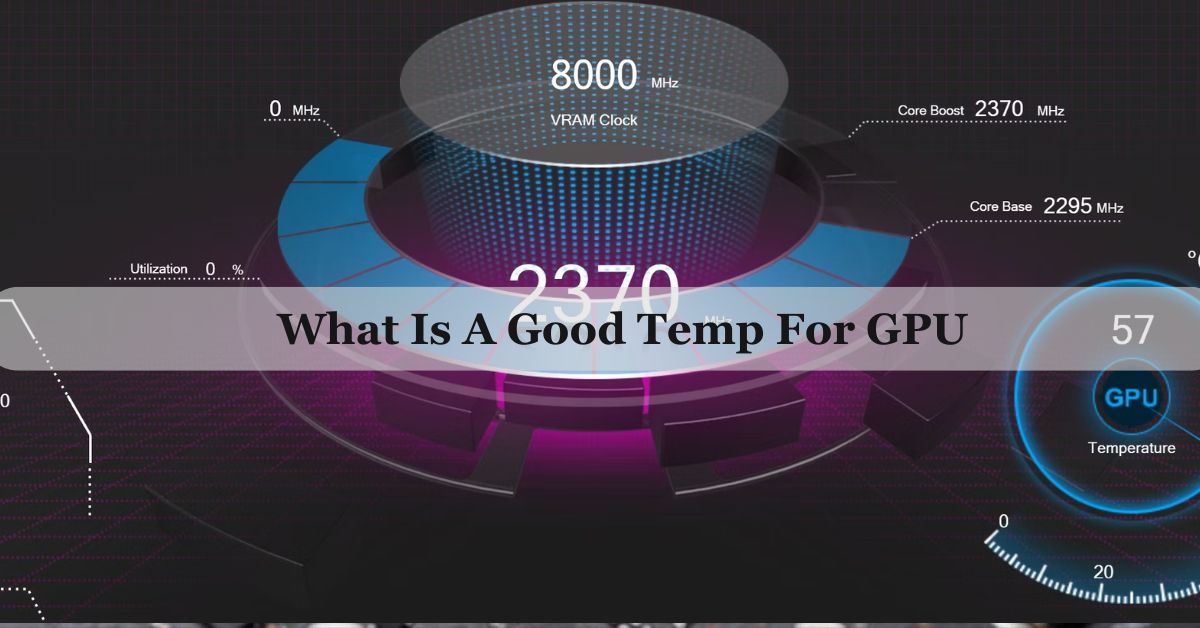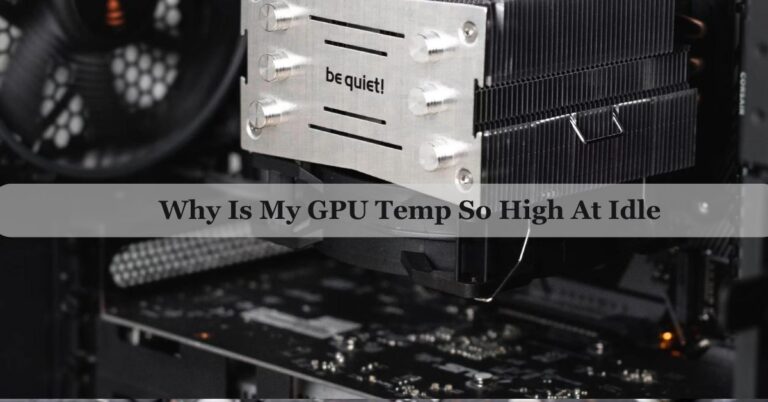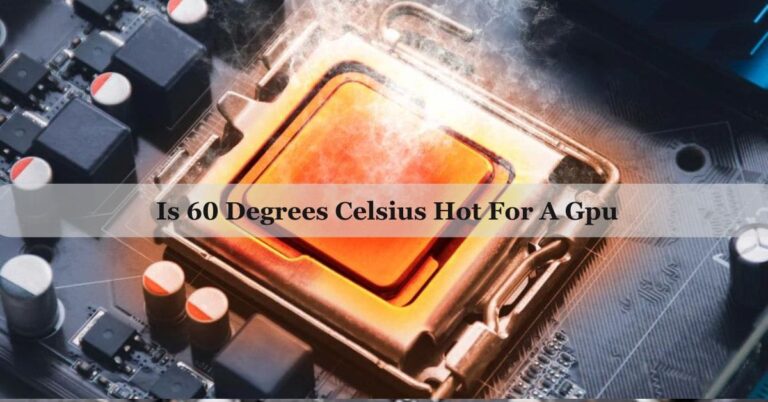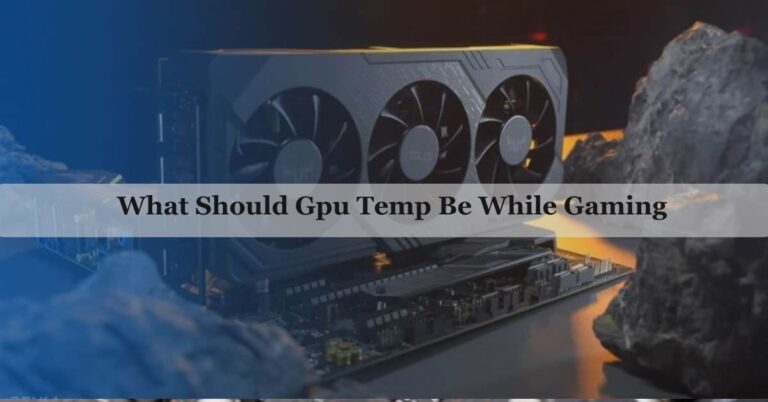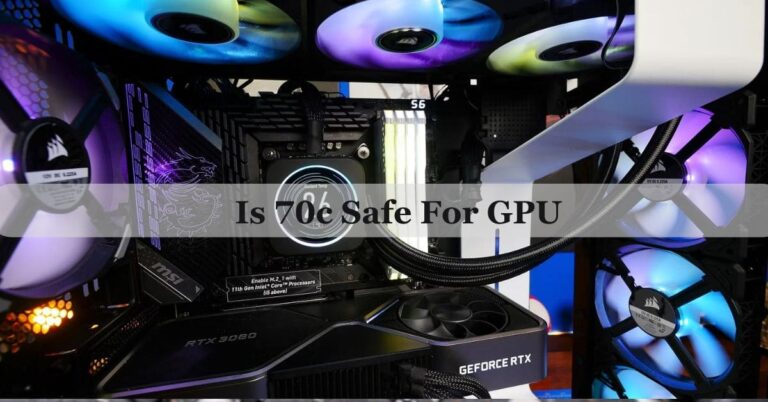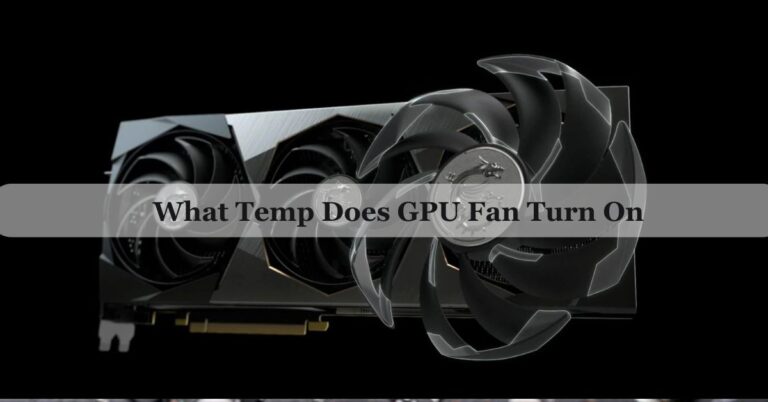What Is A Good Temp For GPU – Ultimate Guide Of 2024!
From my experience, keeping my GPU temperature between 65°C and 85°C has helped maintain smooth performance and prevent overheating issues. I found that regular cleaning and good airflow make a significant difference in staying within this safe range.
A good temperature for a GPU is between 65°C and 85°C (149°F to 185°F) during heavy use like gaming. Keeping your GPU within this range helps ensure it performs well and avoids overheating. Regular monitoring and proper cooling can help maintain these temperatures.
In this article, we will discuss “what is a good temp for GPU“.
What Is A GPU?
A GPU, or Graphics Processing Unit, is a computer chip that handles graphics and visual tasks. It helps render images, videos, and animations, making it essential for gaming and video editing. Essentially, it speeds up and improves how your computer displays visuals.
What Is GPU Temperature?
GPU temperature refers to how hot the graphics processing unit gets while it’s working. It measures the heat produced as the GPU performs tasks like gaming or rendering. Keeping this temperature in a safe range is crucial to ensure the GPU works efficiently and lasts longer.
Why Does GPU Temperature Matter?
1. Performance:
The GPU temperature affects its performance. If the GPU gets too hot, it may slow down to avoid damage, leading to lower frame rates and reduced performance during games or applications.
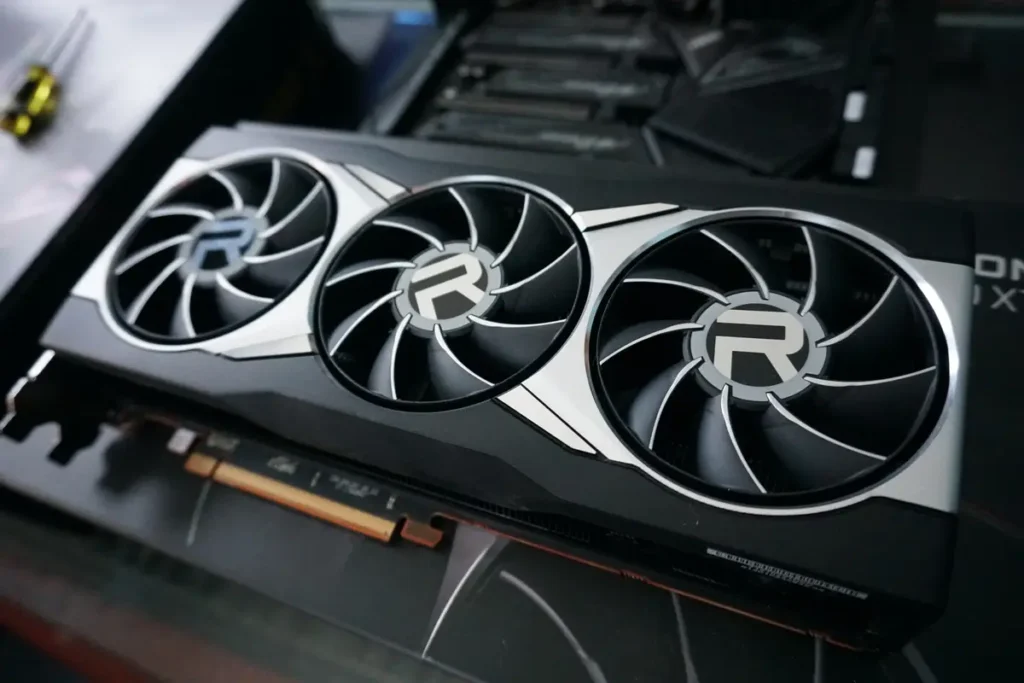
2. Longevity:
High temperatures can shorten the GPU’s lifespan. Keeping the GPU cool helps prevent overheating issues and extends its overall life, reducing the need for costly replacements.
3. Stability:
Overheating can cause system instability, including crashes and glitches. Maintaining proper GPU temperature ensures a stable and smooth computing experience without unexpected disruptions.
Read More: Is 70c Safe For GPU – Read Our Latest 2024 Guide!
GPU Idle Temperature Range:
GPU idle temperature is the temperature of the graphics card when it’s not doing heavy tasks, like gaming or rendering. Typically, it ranges from 30°C to 50°C (86°F to 122°F). This lower temperature indicates that the GPU is not under significant stress and is cooling effectively.
What Is A Good Temp For GPU?
A good temperature for a GPU is between 65°C and 85°C (149°F to 185°F) during intense tasks like gaming. This range ensures that the GPU performs well without overheating. Keeping the temperature within this range helps maintain optimal performance and prolongs the GPU’s lifespan.
What Should I Do If The GPU Temperature Is Soo High?
If your GPU temperature is too high, first check and clean any dust around the GPU and fans. Ensure your PC has good airflow by adding or adjusting fans if needed. You might also want to reapply thermal paste or upgrade your cooling system to manage the heat better.
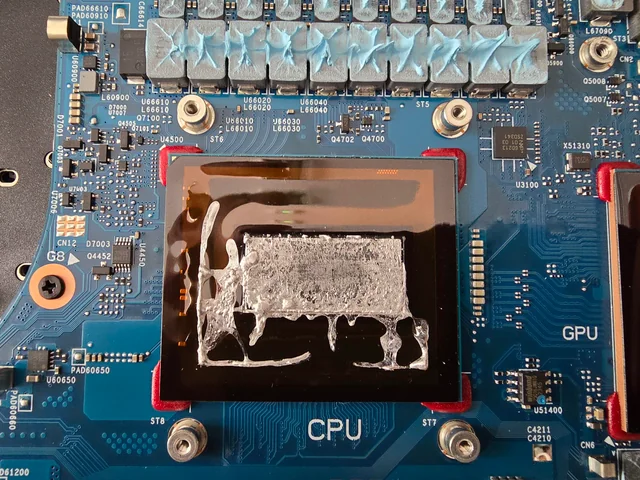
How To Lower GPU Temperature?
1. Improve Case Ventilation:
Ensure your PC case has good airflow by adding or adjusting fans. Proper ventilation helps dissipate heat more effectively, keeping the GPU cooler.
2. Clean Your PC:
Dust can block airflow and cause higher temperatures. Regularly clean the inside of your PC, including the GPU and fans, to prevent dust buildup.
3. Upgrade Cooling Solutions:
Consider upgrading your GPU’s cooling system. Options include aftermarket coolers with better fans or even liquid cooling solutions for more effective heat management.
4. Adjust Fan Speeds:
Increase the speed of your GPU’s fans if it’s running too hot. Most monitoring software allows you to control fan speeds to help lower temperatures.
5. Reapply Thermal Paste:
If the thermal paste between the GPU and its cooler is old or improperly applied, reapply it. Fresh thermal paste improves heat transfer and can help reduce temperatures.
Is 80 C Hot For GPU?
80°C is on the higher side for a GPU, but it is generally safe for short periods, especially under heavy load like gaming. However, if temperatures frequently reach this level, it’s a good idea to check your cooling system and ensure proper airflow to prevent potential overheating issues.
Read More: Can A Motherboard Bottleneck A Gpu – Ultimate Guide For 2024!
What Are Good CPU And GPU Temps?
Good CPU temperatures are typically between 30°C and 60°C (86°F to 140°F) when idle and up to 85°C (185°F) under load. For GPUs, a safe temperature is between 65°C and 85°C (149°F to 185°F) during heavy use. Maintaining these temperatures helps ensure both CPU and GPU operate efficiently and last longer.
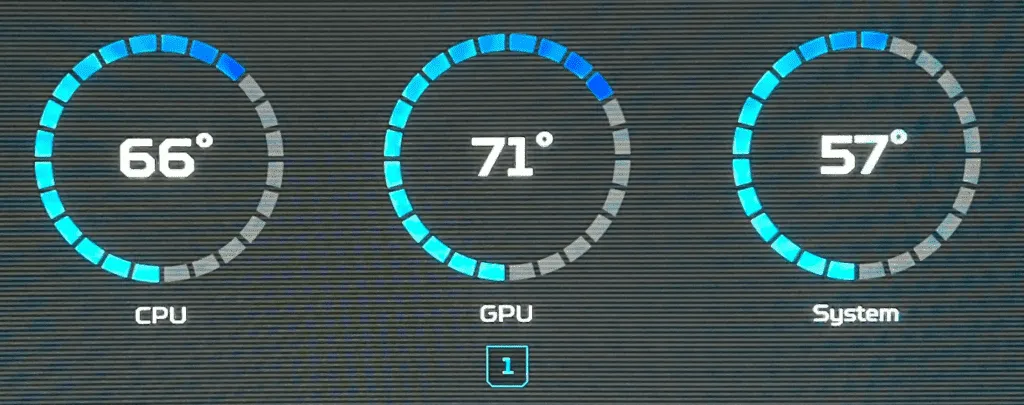
Can A GPU Get Too Cold?
Yes, a GPU can get too cold, but it’s rare. Extremely low temperatures can cause condensation, which might damage the hardware. Generally, GPUs are designed to operate well within normal temperature ranges, and it’s more important to avoid overheating.
What Should Be The Normal GPU Temp While Gaming?
The normal GPU temperature while gaming should be between 65°C and 85°C (149°F to 185°F). This range ensures that the GPU is working efficiently without overheating. Temperatures outside this range may indicate cooling issues or excessive load.
Normal GPU Temperature:
The normal GPU temperature is typically between 30°C and 60°C (86°F to 140°F) when idle and between 65°C and 85°C (149°F to 185°F) under heavy use, like gaming. Keeping your GPU within these temperatures helps ensure it operates efficiently and lasts longer.
Should I Be Worried About My GPU Temperature?
You should be concerned if your GPU temperature frequently exceeds 85°C (185°F), as this can lead to overheating and potential damage. Regularly monitor your GPU’s temperature, and if it gets too high, check your cooling system and ensure proper airflow to keep it within a safe range.
Read More: Why Is My Gpu Underperforming – Comprehensive Guide Of 2024
What Are The Ideal Temps For CPU?
The ideal CPU temperature is between 30°C and 60°C (86°F to 140°F) when idle and up to 85°C (185°F) under heavy use. Keeping temperatures within this range ensures optimal performance and longevity.
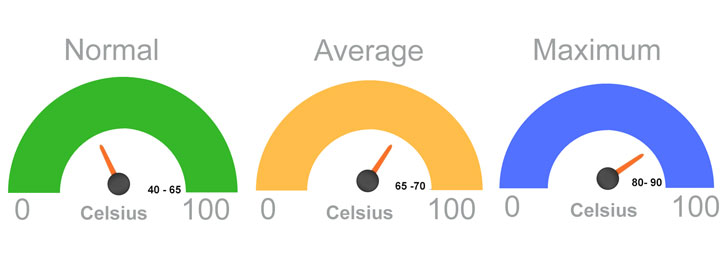
What Is A Good Temp For GPU Gaming?
A good temperature for a GPU while gaming is between 65°C and 85°C (149°F to 185°F). This range ensures that the GPU performs well without overheating. Keeping the temperature within this range helps maintain smooth gaming performance and extends the GPU’s lifespan.
Safe GPU Temps For A 3080:
For an NVIDIA GeForce RTX 3080, safe GPU temperatures are typically between 65°C and 85°C (149°F to 185°F) during intense use like gaming. Staying within this range helps ensure optimal performance and avoids overheating. If temperatures go much higher, check your cooling system and airflow.
How Long Can I Play On 75 GPU Temp?
Playing with a GPU temperature of 75°C (167°F) is generally safe for extended periods. Most GPUs are designed to handle temperatures up to 85°C (185°F), so 75°C is well within the safe range. However, ensure your cooling system is working well to avoid any potential overheating issues.
Is It Okay For My GPU To Reach 90°c?
While some GPUs can handle temperatures up to 90°C (194°F), it’s not ideal for prolonged use. Consistently reaching this temperature can lead to overheating and potential damage. It’s best to improve cooling or ventilation to keep temperatures lower and ensure safe operation.
Is It Good For GPU Lifespan To Run 32-30c In Idle Temps?
Running a GPU at 30°C to 32°C (86°F to 89°F) while idle is excellent for its lifespan. These temperatures are well within the safe range and indicate effective cooling. Maintaining such low idle temperatures helps ensure the GPU operates efficiently and lasts longer.
Read More: How Many Gpu Cores Do I Need – Complete Guide For 2024!
Should I Worry About GPU Working Temperature?
Yes, you should monitor your GPU working temperature. If it consistently exceeds safe ranges (65°C to 85°C or 149°F to 185°F), it can lead to overheating and reduced lifespan. Keeping an eye on temperatures and ensuring proper cooling helps maintain performance and prevent damage.

FAQs:
1. What Is The Maximum Safe Temperature For A GPU?
Most GPUs can safely handle temperatures up to 85°C (185°F). Going beyond this can cause overheating issues.
2. Can Ambient Temperature Affect GPU Temperature?
Yes, if your room is hot, it can cause your GPU to run at higher temperatures.
3. How Can I Improve Airflow In My Pc Case?
Ensure that your PC case has enough intake and exhaust fans, and that there is space around your PC for air circulation.
4. What Are Signs That My GPU Is Overheating?
Signs include frequent crashes, artifacts or glitches in graphics, and reduced performance.
5. Does Using A GPU-Intensive Application Always Mean High Temperatures?
Yes, GPU-intensive applications like high-end games or rendering software can raise temperatures, but they should stay within the safe range.
6. What Is Thermal Throttling?
Thermal throttling is when a GPU reduces its performance to cool down and prevent overheating.
7. How Does Overclocking Affect GPU Temperature?
Overclocking increases the workload on your GPU, which can raise temperatures. Ensure you have good cooling if you overclock.
8. Can A GPU Run Safely At 100°c?
No, running a GPU at 100°C (212°F) is dangerous and can lead to damage. It’s important to address high temperatures immediately.
9. Do Aftermarket GPU Coolers Make A Difference?
Yes, aftermarket coolers can provide better cooling than stock coolers, helping to keep temperatures lower.
10. Is It Normal For GPU Temperatures To Fluctuate?
Yes, it’s normal for temperatures to vary with different workloads and environmental conditions. However, they should stay within the safe range.
Conclusion:
In conclusion, a good temperature for a GPU is between 65°C and 85°C (149°F to 185°F) during heavy use like gaming. This range helps keep your GPU performing well and avoids overheating. Regular monitoring, cleaning, and proper cooling can help maintain these temperatures and ensure your GPU runs efficiently for a long time.
Related Posts:
- How Hot Is Too Hot For GPU – Avoid Overheating 2024!
- How Long Does GPU Last – Extend GPU Lifespan 2024!
- What Should GPU Usage Be When Gaming – GPU Usage 2024!
- Can I Bring A Gpu On A Plane – Ultimate Guide Of 2024!

James George is a GPU expert with 5 years of experience in GPU repair. On Techy Cores, he shares practical tips, guides, and troubleshooting advice to help you keep your GPU in top shape. Whether you’re a beginner or a seasoned tech enthusiast, James’s expertise will help you understand and fix your GPU issues easily.

